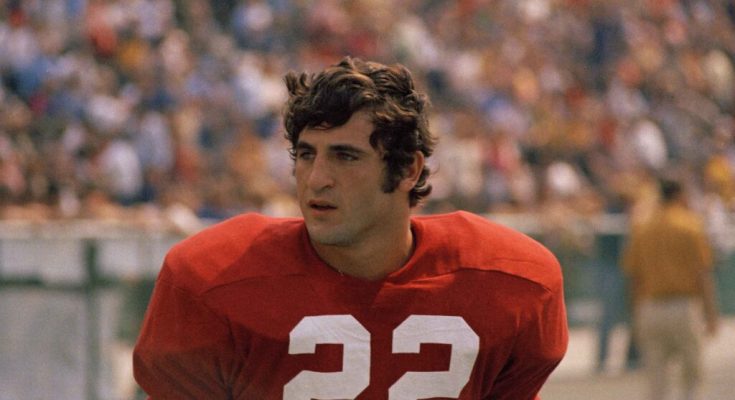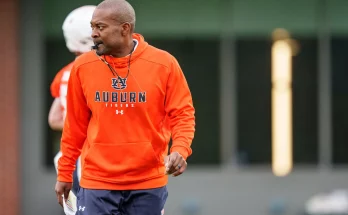Alabama ballcarriers made history with a pair of No. 22s each.
In the storied history of Alabama football, certain jersey numbers become synonymous with greatness. Among the most iconic is No. 22—a number worn by some of the Crimson Tide’s most legendary ballcarriers. While many jersey numbers pass from one player to another without much attention, No. 22 has come to carry a legacy all its own, largely because of the excellence of those who wore it and the historical coincidences that tie them together. In particular, Alabama fans will never forget that the Tide’s backfield was once home to a pair of No. 22s who each made history in their own right: Mark Ingram and Najee Harris. Their individual brilliance, combined with the symbolic power of the number they wore, has etched the number 22 into Alabama’s cultural and football DNA.
Mark Ingram, who burst onto the college football scene in 2008, became a household name in 2009 when he ran his way to a Heisman Trophy, the first ever by an Alabama player. Ingram’s season was a clinic in consistency and big-game performance. He finished the year with 1,658 rushing yards, 17 touchdowns, and countless key plays in the biggest moments, including a dominant showing in the SEC Championship against Florida and the BCS National Championship Game against Texas. Ingram’s toughness, vision, and low center of gravity made him nearly impossible to bring down. But it wasn’t just his numbers that made him special; it was his relentlessness and his timing. He always seemed to make a play when Alabama needed it most.
Wearing No. 22, Ingram redefined what it meant to be a running back at Alabama during the Nick Saban era. He helped transform the Tide from a rebuilding team into a national power. His Heisman win was not only a personal triumph but a program-altering moment. Before Ingram, Alabama had produced great running backs—Shaun Alexander, Bobby Humphrey, and others—but none had captured college football’s most prestigious award. Ingram’s No. 22 became a symbol of resurgence and dominance. It came to represent more than just a player—it stood for the rise of a dynasty.
A decade later, another powerful back came along wearing that same number, and his name would also go down in Alabama history. Najee Harris, a California native and five-star recruit, arrived in Tuscaloosa with massive expectations. Standing 6-foot-2 and weighing over 230 pounds, Harris brought a unique blend of size, agility, and finesse to the backfield. Over his four-year career, Harris became Alabama’s all-time leader in career touchdowns and rushing yards, surpassing legends like Derrick Henry and Shaun Alexander. Like Ingram before him, Harris wore No. 22 with pride, and he honored the legacy while carving out his own.
What set Harris apart was his evolution. As a freshman and sophomore, he played behind other talented backs, including Damien Harris and Josh Jacobs. But by his junior and senior seasons, he had become the focal point of the Alabama offense. In 2020, Harris was instrumental in the Crimson Tide’s undefeated season and national championship run. He racked up 1,466 rushing yards and an astonishing 26 touchdowns on the ground. He added another 425 receiving yards and four receiving touchdowns, proving himself to be one of the most complete backs in college football history.
Harris’s most memorable performances came in the biggest games. In the 2020 SEC Championship against Florida, he rushed for 178 yards and scored five total touchdowns. In the College Football Playoff semifinal against Notre Dame, he hurdled a defender in a moment that became an instant highlight. In the national championship game against Ohio State, he scored three more touchdowns, helping seal another title for the Crimson Tide. Like Ingram before him, Harris delivered when it mattered most.
What’s remarkable is how both players, wearing the same jersey number, bookended a decade of dominance for Alabama football. Ingram’s title in 2009 was the first under Nick Saban. Harris’s title in 2020 was the sixth under Saban, and it represented a different kind of greatness faster-paced, more dynamic, yet still rooted in power football. Ingram played during the height of the pro-style era, when Alabama leaned heavily on defense and clock control. Harris, by contrast, operated in Steve Sarkisian’s spread attack, which used motion, tempo, and space to isolate defenders. Yet despite the schematic differences, both backs carried the same physical edge, determination, and ability to take over games.
The symmetry between Ingram and Harris didn’t stop at numbers or championships. Both players left Alabama with school records. Ingram was the first Heisman winner in school history; Harris finished as Alabama’s all-time leading scorer. Both were first-round NFL Draft picks, with Ingram going 28th overall to the New Orleans Saints in 2011 and Harris going 24th overall to the Pittsburgh Steelers in 2021. Both became immediate contributors in the NFL, continuing the legacy of Alabama running backs at the next level.
Beyond the stats and accolades, what connects these two No. 22s is the way they carried themselves. Ingram, though fiery on the field, was known for his humility and leadership. Harris, famously media-shy early in his career, became a thoughtful speaker and team captain by the time he left Alabama. Both players showed loyalty to the program by choosing to play through adversity Ingram battled injuries during his final season, and Harris returned for his senior year when he could’ve gone pro after his junior campaign. Their decisions helped cement their legacies as more than just stars they were culture setters.
There’s also a certain poetic weight to the fact that both players wore the same number during such transformative moments in Alabama history. For younger fans, the number 22 has become something of a mythical marker when someone wears that jersey at Alabama, expectations are sky-high. It’s a number that now carries the pressure of greatness. Recruits who choose it know what it represents. It’s no longer just a uniform; it’s a symbol of legacy, production, and heart.
Over time, Alabama has had many great backs wear other numbers Derrick Henry famously wore No. 2, Trent Richardson wore No. 3, Shaun Alexander wore No. 37. But there’s something unique about the narrative surrounding No. 22. The fact that two of the most celebrated backs in Alabama history shared that number, played in different eras, and both elevated the program to new heights makes the number resonate deeper than most. When fans see No. 22 on the field today, it evokes memories of touchdowns, trophies, and toughness.
The history of No. 22 at Alabama also reflects the program’s ability to adapt while maintaining its core identity. Ingram and Harris played in different offensive systems with different supporting casts, yet both delivered championship-level production. That speaks to the consistency of the Alabama machine and the program’s ability to maximize elite talent regardless of scheme. It also underscores the influence of head coach Nick Saban, whose emphasis on discipline, preparation, and mental toughness shaped both men.
Even off the field, the two players have followed a similar trajectory. Ingram became a respected voice in the NFL and a vocal advocate for social justice issues. Harris has similarly used his platform to support underprivileged youth and promote awareness of homelessness drawing from his own experiences growing up in difficult circumstances. Their commitment to community and leadership beyond football has made them not just great players, but great ambassadors for the Crimson Tide.
Today, when Alabama releases its roster and fans scan the list for jersey numbers, many still pause when they get to No. 22. There’s a reverence attached to it now. Who will wear it next? Will they live up to the high standard? That’s part of what makes college football so rich the way traditions build upon themselves, creating layers of history and meaning. At Alabama, No. 22 isn’t just a number it’s a legacy built by two players who made history, lifted trophies, and carried a program on their shoulders.
From Mark Ingram to Najee Harris, the story of Alabama’s No. 22 is one of excellence, resilience, and impact. They weren’t just ballcarriers; they were cornerstones. They weren’t just stars; they were legends. And while jersey numbers come and go, some take on a life of their own. For Alabama, No. 22 will always mean greatness.



